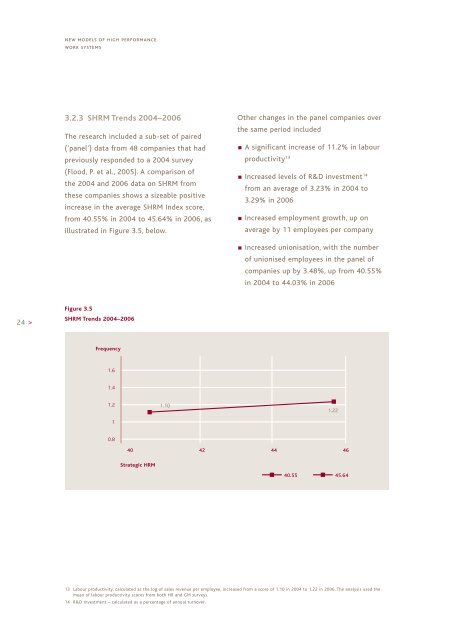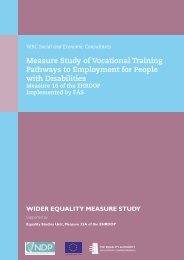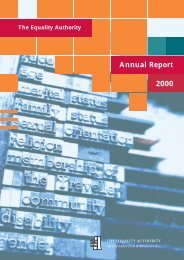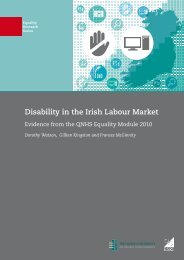New Models of High Performance Work Systems - Equality Authority
New Models of High Performance Work Systems - Equality Authority
New Models of High Performance Work Systems - Equality Authority
- No tags were found...
You also want an ePaper? Increase the reach of your titles
YUMPU automatically turns print PDFs into web optimized ePapers that Google loves.
new models <strong>of</strong> high performancework systems3.2.3 SHRM Trends 2004–2006The research included a sub-set <strong>of</strong> paired(‘panel’) data from 48 companies that hadpreviously responded to a 2004 survey(Flood, P. et al., 2005). A comparison <strong>of</strong>the 2004 and 2006 data on SHRM fromthese companies shows a sizeable positiveincrease in the average SHRM Index score,from 40.55% in 2004 to 45.64% in 2006, asillustrated in Figure 3.5, below.Other changes in the panel companies overthe same period includedp A significant increase <strong>of</strong> 11.2% in labourproductivity 13p Increased levels <strong>of</strong> R&D investment 14from an average <strong>of</strong> 3.23% in 2004 to3.29% in 2006p Increased employment growth, up onaverage by 11 employees per companyp Increased unionisation, with the number<strong>of</strong> unionised employees in the panel <strong>of</strong>companies up by 3.48%, up from 40.55%in 2004 to 44.03% in 2006Figure 3.524 >SHRM Trends 2004–2006Frequency1.61.41.211.101.220.840 42 44 46Strategic HRM40.55 45.6413 Labour productivity, calculated as the log <strong>of</strong> sales revenue per employee, increased from a score <strong>of</strong> 1.10 in 2004 to 1.22 in 2006. The analysis used themean <strong>of</strong> labour productivity scores from both HR and GM surveys.14 R&D Investment – calculated as a percentage <strong>of</strong> annual turnover.
















